After producing the successful 1966 Loxene Golden Disc award, Wellington-based TV producer Christopher Bourn was put in charge of the 1967 programme. Bourn decided to make a drastic change and go outdoors. “The previous year’s event was a rather staid affair,” he recalls. “I wanted to escape the confines of the studio. The Monkees weekly television series was also an inspiration with its mix of slap stick and outdoor shoots.”
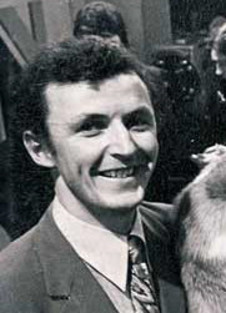
Christopher Bourn
Bourn’s brief was to produce a clip for each of the 1967 Loxene finalists for an early November screening. Based in Wellington, he was given a the list of finalists in early August, just three weeks before the public announcement, and a month before the public were invited to vote for their favourite disc. All clips were to be filmed on location on 16mm film.
“We had to design our own sound playback equipment so the performers could hear their songs [and] most of the acts had to learn how to perform to short segments and things like continuity from one shot to the next. I told the performers and their managers that I would need their presence for three hours for the shoot but in actual fact it was closer to a full day, while I would spend another two days in the edit suite for each clip.”
With the use of a mobile van and a crew of Peter Boden (camera), Stephan Dean (sound), and assistant Peter Janes, Bourn hit the ground running.
With The Avengers being the only group in Wellington at the time, Bourn arranged for their clip of ‘Everyone’s Gonna Wonder’ to be shot at HMV’s studio where it had been recorded. “There was a bit of industry talk around the timing of their entry and it not being cricket,” he says. “The record was held back and submitted within hours of the nomination deadline, which effectively made it the newest release of the batch and if all went well it would peak at the right time. I got them into the studio within a day or two of the announcement, just in case things got nasty.”
With the C’mon touring party in Wellington on the 18th and 19th of August, Bourn and his team were able to film two of the four finalists. The clips for Herma Keil & The Keil Isles and Sandy Edmonds were shot around the inner city and Oriental Parade, with some additional footage of Herma shot during his performance on the C’mon stage show that night at the St James theatre. After the C’mon tour left Wellington they headed across the strait for shows in Nelson before arriving back in Wellington en route to Whanganui and Palmerston North.
Chris Bourn: “TV cameras at any outdoor shoot were a magnet for the public and very much a novelty, so we always tried to find somewhere accessible and recognisable, but away from the public. Therefore filming the Mr Lee Grant clip was undertaken with military precision. I arranged with Phil Warren to smuggle Lee out of the tour bus in the Ngauranga Gorge after leaving the Interislander and place him into my car to ensure protection from the screaming hordes if he was sighted.
“Security was so tight that we didn’t even tell the rest of the tour party. I can still hear the rest of them mumbling under their breaths, as they all thought that Lee was getting the star treatment. We then drove to Wellington’s Kelburn Park. And as we arrived we were immediately surrounded by hundreds of screaming girls. How they knew of the location was beyond me but I suspect that it was Lee’s manager Dianne Cadwallader, who never left a promotional chance go begging. I managed to make myself heard over the melee and told them that they could all be on television with Lee if they followed my instructions. They immediately became compliant which was a great outcome, rather than them chasing Lee around the surrounding suburbs for the rest of the day. We placed Lee on the edge of the fountain with Wellington harbour in the background and shot all the various takes with reaction from the fans.”
“After the Mr Lee Grant shoot we met up with the C’mon touring party two days later in Palmerston North, where we shot The Underdogs in the Massey campus grounds. I was forewarned that The Underdogs were partial to a few practical jokes and a bit of general mayhem, but they were probably the best behaved of all of the shoots, although I suspect that their relaxed attitude had more to do with hangovers.”
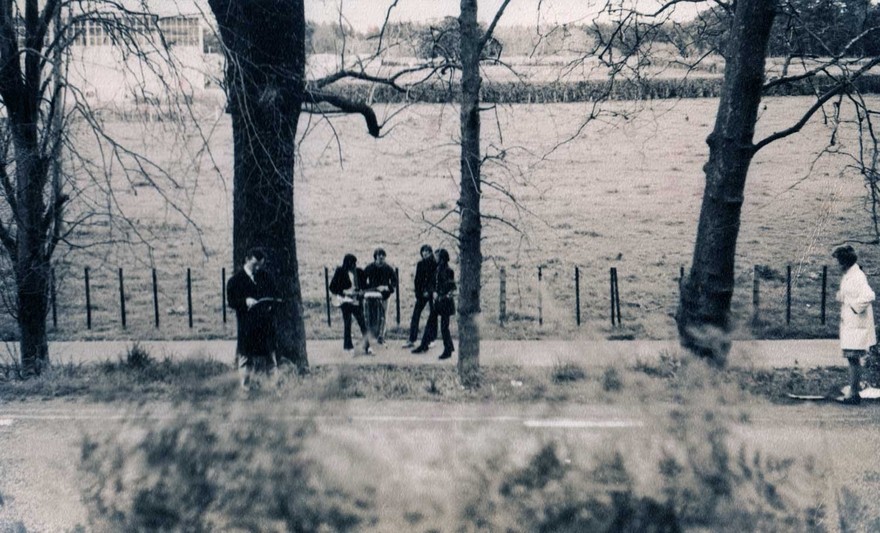
The Underdogs filming the video for 'Sitting In The Rain' outside Palmerston North, 1967. Director Christopher Bourn is seen on the left. (The cameraman was Peter Boden.) - Christopher Bourn collection
There was a full-on crew and associates party after the Palmerston North show. The press were in attendance and parts of the show were filmed for Wellington’s Town & Around TV magazine programme. With the Underdogs footage in the can, Bourn and his crew headed for Auckland where in a hectic two day period The Gremlins’ and Ray Woolf & The Avengers’ entries were filmed.
The Gremlins’ clip for their song ‘Blast Off 1970’ was shot at Auckland’s International airport at Mangere. Group leader Glyn Tucker recalls: “I’m not sure if any permission was sought – we just bowled up, had a look around and set up on the tarmac outside the terminal. Chris had one shot in mind that he wanted, which was to have a Boeing 737 taking off behind us as we played. At the time I had some reservations about it, thinking that a Boeing 737 at Mangere did not come close to space travel, which is what the song was about, but I decided not to rock the boat”.
The Ray Woolf & The Avengers shoot was done by the Northcote Wharf, under the Auckland Harbour Bridge, which is a very quiet and secluded spot after the morning commuters have parked their cars and caught the ferry to downtown for their day’s work. Group leader Bill Belton recalls “It was a great experience for the group and we all enjoyed it, but it was laced with a bitter sweetness as we found out on the next day that we wouldn’t be included in the just-announced Loxene Golden Disc National tour.
“The decision was made that because there were two groups with the same name that we were surplus to requirements, even though we were first with the name, but on the other hand several of our members had proper jobs which would have been a mission to recruit a few temporary players.”
Maria Dallas, who was touring the country with her own show at the time, after returning from recording sessions with Felton Jarvis in Nashville, was next on the list. Her entry ‘Handyman’ was shot in Island Bay on a blustery winter’s day that tested everybody’s fortitude including the effervescent Maria. Bourn then had to wait for two weeks until the country’s two top groups The La De Da’s and Larry’s Rebels arrived back home from Australia. The La De Da’s clip for their entry ‘Rosalie’ was filmed on the western side of Auckland’s Albert Park, away from the prying eyes of the public.
The last of the 10 clips featured Larry’s Rebels after their return from Australia. Bourn: “If Mr Lee Grant mania was rampant at the time then Larry’s Rebels mania wasn’t far behind if not on a par. When they turned up with their coloured fluorescent suits I knew that I had better find some where away from the public. Being winter and outside the cruise ship season I figured that the emptiest place in central Wellington would be the wharf terminal lounge where we shot one of New Zealand music’s most iconic music clips”.
Up until this stage the amount of pop music video clips and TV performances that have survived and produced in New Zealand were few and far between. Ray Columbus & The Invaders performing their big hit and 1965 Loxene Golden Disc Award winning song ‘Till We Kissed’ (the group’s iconic ‘She’s A Mod’ clip was shot in Australia), a 1965 promotional film of Rod Derrett’s song ‘Pūhā & Pākeha’, and several newsreel clips of Dinah Lee on stage and in the studio are the only surviving predecessors to Bourn’s filmed documentation of our burgeoning music history. In the space of seven weeks he shot what is now the backbone of our national music archive, five of which have survived. Kevan Moore’s weekly TV pop show C’mon finished its first series just a few weeks prior to the Loxene announcement and of the 22 hours of footage that was broadcast over the three series (1967-69) only 40 minutes survived from the days when videotape was re-used by the NZBC.
The 1967 Loxene Golden Disc was won by Mr Lee Grant for ‘Thanks to You’.
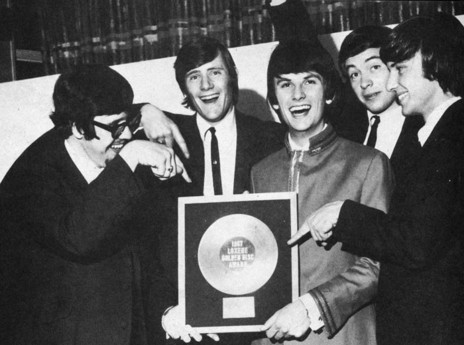
Mr Lee Grant with his 1967 Golden Disc, surrounded by runners-up The Avengers. The black and white image doesn't do justice to Mr Lee's scarlet tunic. His acceptance was "I owe this award to all who voted for me – it's thanks to you." - Photo by Barry Clothier; Simon Grigg collection
The Loxene finalists in order of shooting
The Avengers – ‘Everyone’s Gonna Wonder’* / Sandy Edmonds – ‘Daylight Saving Time’* / Herma Keil & The Keil Isles – ‘C’mon’ / Mr. Lee Grant – ‘Thanks To You’ / The Underdogs – ‘Sitting In The Rain’* / The Gremlins – ‘Blast Off 1970’** / Ray Woolf & The Avengers – ‘Crystal Ball’ / Maria Dallas – ‘Handyman’ / The La De Da’s – ‘Rosalie’* / Larry’s Rebels – ‘Let’s Think Of Something’*
* denotes footage has survived; ** denotes home-made recording
Christopher Bourn
Just as this article was published, AudioCulture received word that longtime TV director and producer Christopher Bourn passed away on 29 May 2024. In the early years of television in New Zealand, Bourn was central to its coverage of music and entertainment. After five years producing sports broadcasts, in 1965 his work began to include light-entertainment programmes. He directed several Loxene Golden Disc award ceremonies, including the first one, which Ray Columbus and the Invaders won with ‘Till We Kissed’.
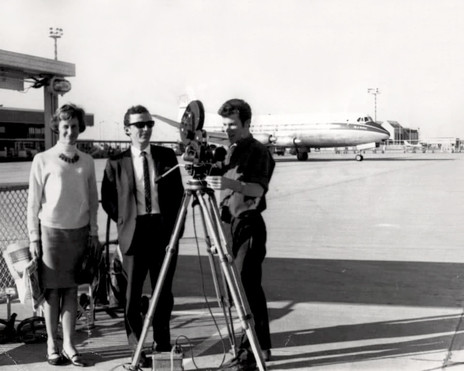
Christopher Bourn (in shades) on the Rongotai tarmac, waiting for a sports team.
In his AudioCulture history of the Loxene award, Simon Grigg writes, “Despite early initial discussions to create a live TV show, the first two Loxene Golden Discs were a radio only live-affair, with the 1965 finalists being broadcast live from the Wellington White Heron on 25 November, after an earlier dinner. There was, however, a pre-recorded show created at WNTV-2 in Wellington by director Christopher Bourn. It featured the finalists performing live (in the studio) versions of their songs, a New Zealand first as all earlier NZBC music shows were mimed.”
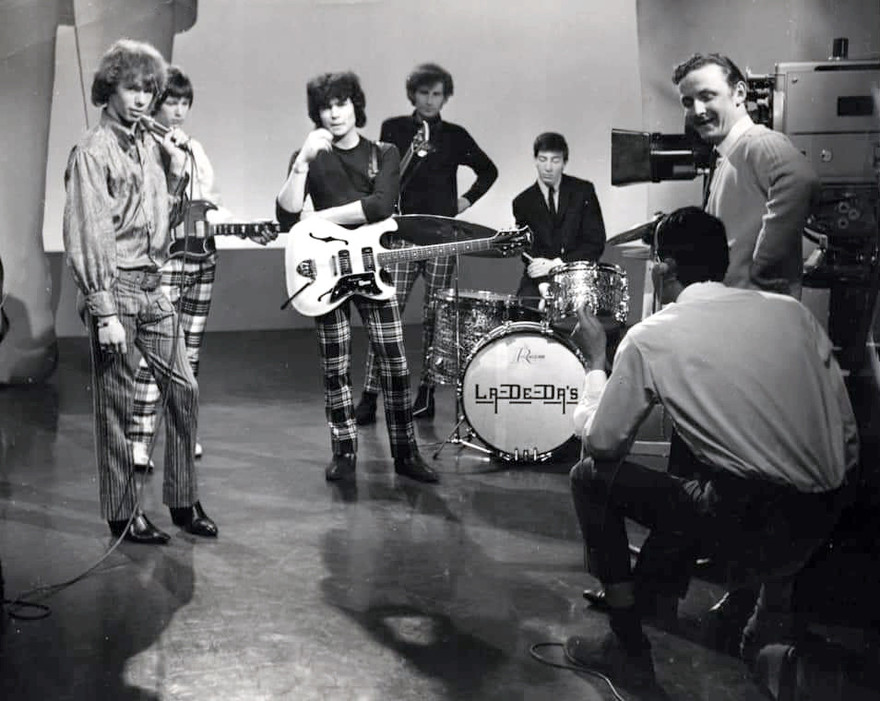
Christopher Bourn (standing, at right) in a television studio with The La De Da's, 1966.
As Grant Gillanders’ article above explains, Bourn was a music clip pioneer in 1967 with his use of outdoor locations to film the Loxene finalists performing their songs. It was between 1968 and 1974 that Bourn made his most significant contribution to music television. He devised and produced the long-running talent quest Studio One and its spinoff series New Faces. In NZ On Screen’s profile of Bourn, written by Keith Tannock, he says that while auditioning talent for the programmes he probably watched more than 10,000 New Zealand variety acts from around the country. Other entertainment programmes Bourn produced and directed include specials for Maria Dallas, and Bill and Boyd, and the 1974 programme The Two of Us, a 15-minute showcase of Shona Laing and Steve Gilpin just after their Studio One/New Faces success.
Later in the 70s, Bourn coordinated the dozen Pacific-rim countries involved in the simultaneous broadcast event the Pacific Song Contest (Tina Cross won the second of these, held in Christchurch).
In 1988, Bourn was honoured with a merit award by the NZ Entertainment Operators Association (formerly NEBOA), for his longtime encouragement of local talent. In the 1990s and 2000s he was involved with big events such as Christmas in the Park and Symphony Under the Stars. – AudioCulture